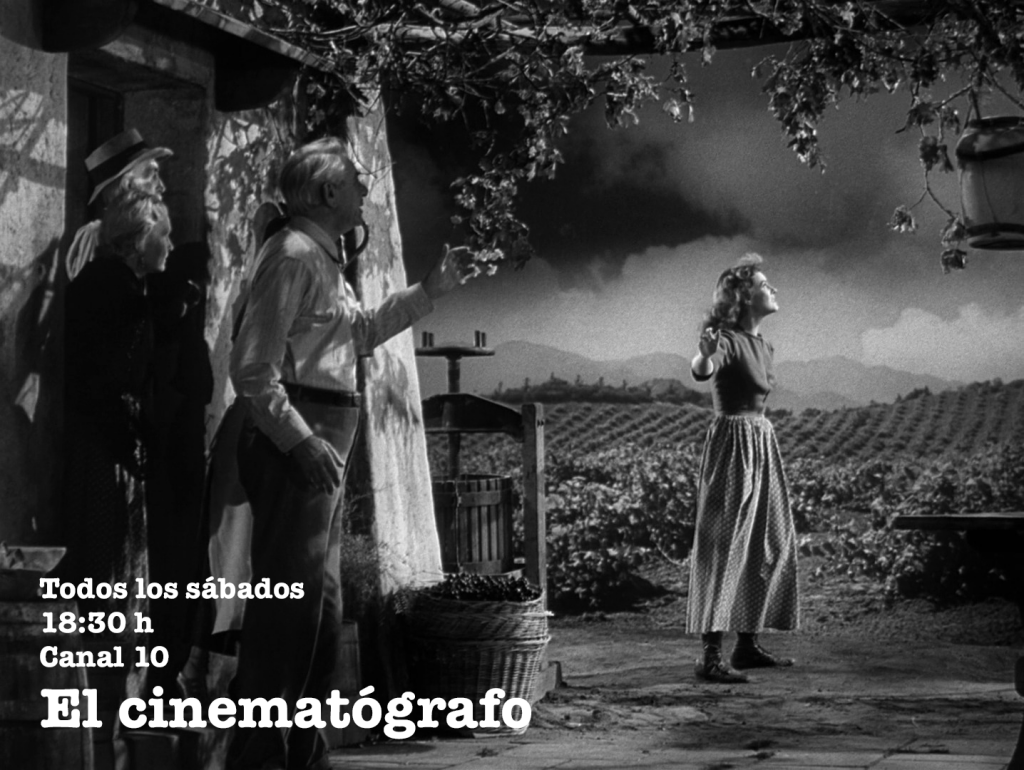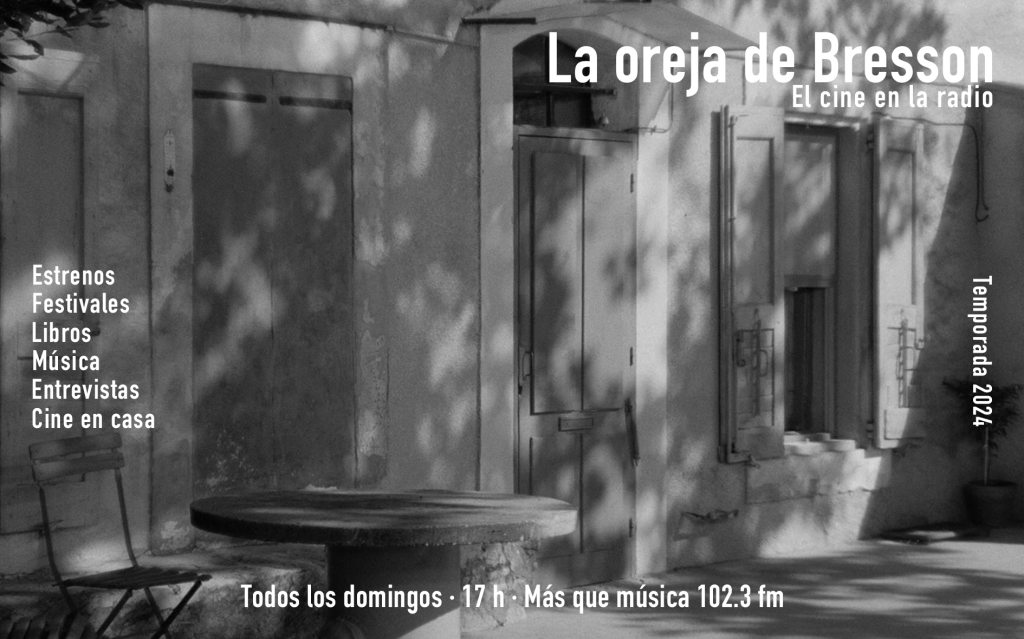
EYES, EARS AND MOUTH. ON PURE CINEMA
In July of 1926, Germaine Dulac published a seminal text entitled “Some reflections on pure cinema”. In it she insisted, decisively and with clarity, on a destiny for the cinema in which it would not have to render accounts about its unique nature before other previously existing artistic disciplines. Responding to the idea that the cinema had been considered up to then as a practice of “engulfing”, in which poetic resources of other fields gathered and imposed themselves upon this new kind of technical recording that was capable of reproducing reality, the young filmmaker and essayist stated: “Considered in this way, cinema does not seem to have any character of its own, and to be nothing but the sensation of photographs in motion, depicting situations which other art forms have used as the source of their inspiration over the centuries. But it appears to some that cinema has the potential for a new form of expression, independent and unfettered: a line where every point is moving, a volume, whose magnitude and form are transformed, a music of the eye, analogous to music made from the uniting of impalpable sounds in tune or in melodic phrases.”
Dulac’s early intuition has other nearby echoes from this same time and place. For example, we could consider some fragments from the philosophical speculations on perception made by Jean Epstein that repeated a decisive concept that cinema could be (or could have been) an art in itself with its own poetics to be developed and an undeniable legacy: movement, time and space, after cinema, make up concepts that reveal a representational unfurling, perhaps a spectral empiricism, whose effects are of the first order to the extent that cinema modified, even without its being perceived in this way, the very nature of perception.
Almost 100 years later, Albertina Carri, an Argentine filmmaker with a number of films to her career, decided to title an installation “Pure cinema” (“Cine puro”). She suggests, without announcing it, that in the evolution of cinematographic language, the period of the 1920s is fundamental, and so she undertakes an aesthetic exploration without giving up on the interrogation that has greatly marked her oeuvre: the abjection of State terrorism and its effects upon the interstices of intimacy. What she presents here does not leave by the wayside her central themes: violence and desire, absence and memory, and the collective and the individual hatch, bestow and delineate “Pure cinema”.
The materials: found film remains, a recent short film about life on Earth, an extensive correspondence read aloud, corridors and a few other things. The collection of letters from her mother to her daughters during the filmmaker’s childhood conveys urgency and danger. This was during a historical moment in Argentina when political and social antagonisms were boiling and one’s very life could be at risk. The 1970s thus is revived through the reading. The transposition of the written word to an oral / aural form cannot be heard without one perceiving in the tone the glossing of a terror that has now passed, and not the symbolic foundations that legitimized the extermination.
What can merge the purity of perception or evocation with the confirmation of terror and the will to take it back up so as not to let it fall into oblivion? That is the mystery of Carri’s proposal, because in principle the concept of the pure and that of the historical repel each other or directly cancel each other out, perhaps because the end of purity is the beginning of History, as it is indirectly predicated from the old myth of the fall. To fall is to fall into History, in time, in putrefaction, in the corruption of the flesh. The heritage of Christianity, for better or for worse, is not absent, but rather is always a clandestine rhetoric that insists on being fundamental.
The fact that Carri’s short film includes observational sequences on animal life, even including some subjective sequences that would correspond to the movement and optical perception of a large quirquincho (armadillo), can be seen as an allusion to a time that does not know periodicity and teleology. Simply put, animal life is a life without history. If the cinema stops in front of the world that surrounds us and limits itself to observing and listening in order to later overcome the optical and auditory instruments of the human organism itself, it is because the cinematograph could restore a genealogical condition in which perception is worked through a technical invention that exceeds natural perception. The naturalistic segment of the short film that she named well «The thin layer of the earth» has the charm of seeing the surrounding world again and aurally feeling an ecosystem without the interference of a representation that erects in nature a resource of infinite exploitation. At times, swamps, plants, trees, stars and animals belong to a primeval universe, a perception that is intensified by the height and scale of the shots and also by a formidable sound design that can sporadically refer to the aesthetic triumphs of Pelechian in The Inhabitants (1970).
The eloquence of the short seems irreconcilable with any hermeneutical use that is not encrypted in a biosphere that does not contain a species like ours, with our unavoidable historical experience and our way of existing that consists of making stories as a way of conjuring up an absolute instant in consciousness with no movement in time. When consciousness does not go backwards or forwards and remains in the present full, it is not essentially different from the pure perception of the animal. Without memories and without projects, what we call human life cannot be configured as such. It is not a question here of a metaphysical differential, but rather an evolutionary one, and therefore random and gratuitous: the story is the invention par excellence of our species, a modality of (symbolic) adaptation that has been successful. Why then this short film in a scenic space where there is pain from and in History? What relationship can be established with the early orphanhood perpetrated by a homicidal state in the lives of some girls? And why announce a pure cinema?
Such concerns can be resolved if it is understood that two imperatives intrinsic to its invention have coexisted in the cinema: that of perception and that of narration. Experimental filmmakers are inclined towards the perceptual will, while those prone to fiction and the story as a reconstruction of the real have expanded and consolidated the narrative will in ways that are dissimilar. Carri is interested in both directions and, depending upon the project in question, the antagonistic binomial is combined according to a central objective. In Cuatreros, perhaps better than in any other of her films, the perceptual and the narrative are harmoniously combined in an essay in which affective rage and political clairvoyance work in consonance with a kaleidoscopic montage that is not far from the general effect of the reception of this new wager. If all the fragments were knotted and transposed in the space of the installation in a montagedivided in time, could not “Pure Cinema” be thought of as an unthinkable reverse of Cuatreros? This hypothesis in reading the work, however, is not entirely conclusive, because something more remains to be said.
The elided mother is disseminated in the spirit of the letters and her ubiquity is paradoxical: reading does not replace her because corpses are corpses, but it does allow us to hear her voice in the voice of a mediator and in the sound orchestration proposed by Carri, her daughter. The content of the letters, if you pay attention to it, contains the inordinate effort of a woman who wants to maintain the bond with her daughters and participate at a distance from domestic life and the life of the spirit. The preoccupation with the daughters’ readings is as surprising as it is moving, as are the hedonistic imperatives for them to have a great time, to enjoy it all. The vitalist nature, that without being stated is present in the correspondence, is the same force that is glimpsed in the films that could not be, and that Carri invokes through filmic materials that can only project decomposition. Herein lies a secret. There is a discreet vitalist nexus between the film as film-organism and the mother’s body, the disappeared body. There is a presupposition that an analog film has some organism, even a memory organism. Perhaps Carri does not fully know how she can make this conjunction possible, but from what she says and does not show and from what she does not say and shows, it is possible to think about that organic relationship between body and film.
The beginning of a life consists of perceiving and the end of being unable to continue narrating. Movies, letters, bodies, nature. Here are the signs of a series organized by a concept of cinema that does not deny the will to narrate, but that also knows how to recognize that every interrupted life is the surrender of a story and that the starting point of (analog) cinema is perceptual intensification. In this dialectical clash without resolution and improvement, Carri rethinks what cinema is. The answer is not exactly the installation, beyond its some offering some hints, because «Pure Cinema» is an act of dismantling in order to start again.
*Commissioned and published in English, German and Spanish by Berliner Künstler for the installation «Albertina Carri: Cine Puro», 28 January to 6 March, 2022.
Roger Koza / Copyleft 2022






Últimos Comentarios